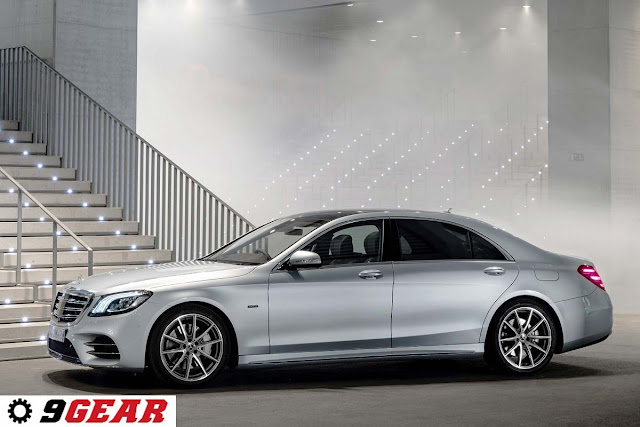Mercedes-Benz S 560 e, New plug-in hybrid: The latest addition to the S‑Class family is a new-generation plug-in hybrid. The S 560 e (combined fuel consumption: 2.1 l/100 km, combined CO2 emissions: 49 g/km, weighted power consumption: 15.5 kWh/100 km) has an all-electric range of around 50 kilometres.
In conjunction with the Mercedes-Benz Wallbox, the on-board 7.2‑kW charger allows fast charging of the battery.
Plug-in hybrids represent a key technology on the road to a locally emission-free future for the motor car. This is because they offer customers the best of both worlds; in the city they can drive on battery power alone, while on long journeys they benefit from the combustion engine's range.
Hybridisation also makes the internal combustion engine more efficient, and ensures more dynamic performance.
The hybrid drive system in the S 560 e combines the 270 kW (367 hp) of the V6 spark-ignition engine with an electric output of 90 kW.
The third-generation hybrid transmission evolved on the basis of the 9G‑TRONIC PLUS automatic transmission. The torque converter, clutch and electric motor are housed in the innovative hybrid drive unit.
The compact design was achieved by integrating and connecting the separating clutch, torsional vibration damper and torque converter lock-up clutch within the rotor of the electric motor. The torque converter with its powerful and highly efficient hydraulic circuit offers the customary smoothness when pulling away in hybrid mode.
Developed together with Bosch as part of the EM‑motive joint venture, the electric motor was specially designed for the 9G‑T RONIC plug-in hybrid transmission.
The new, significantly enhanced power electronics have allowed further increases in output and torque. The electric output of 90 kW and 440 Nm contributes to the effortlessly superior driving sensation in the S‑Class.
The S 560 e has an all-electric range of around 50 kilometres. A crucial factor here is that, although the battery size remains unchanged, the new lithium-ion battery has an increased rated capacity of 13.5 kWh.
Evolving the cell chemistry from lithium-iron-phosphate (LiFePo) to lithium-nickel-manganese-cobalt (Li-NMC) allowed the cell capacity to be increased from 22 to 37 Ah. The highly efficient battery system in the S‑Class comes, for the first time, from the wholly owned Daimler subsidiary Deutsche ACCUMOTIVE.
The power electronics are now housed in the engine compartment. Despite an increase of around 50 percent in its energy content, the dimensions of the new battery are smaller than those of its predecessor. As a result, the boot capacity has increased from 395 to 410 litres.




